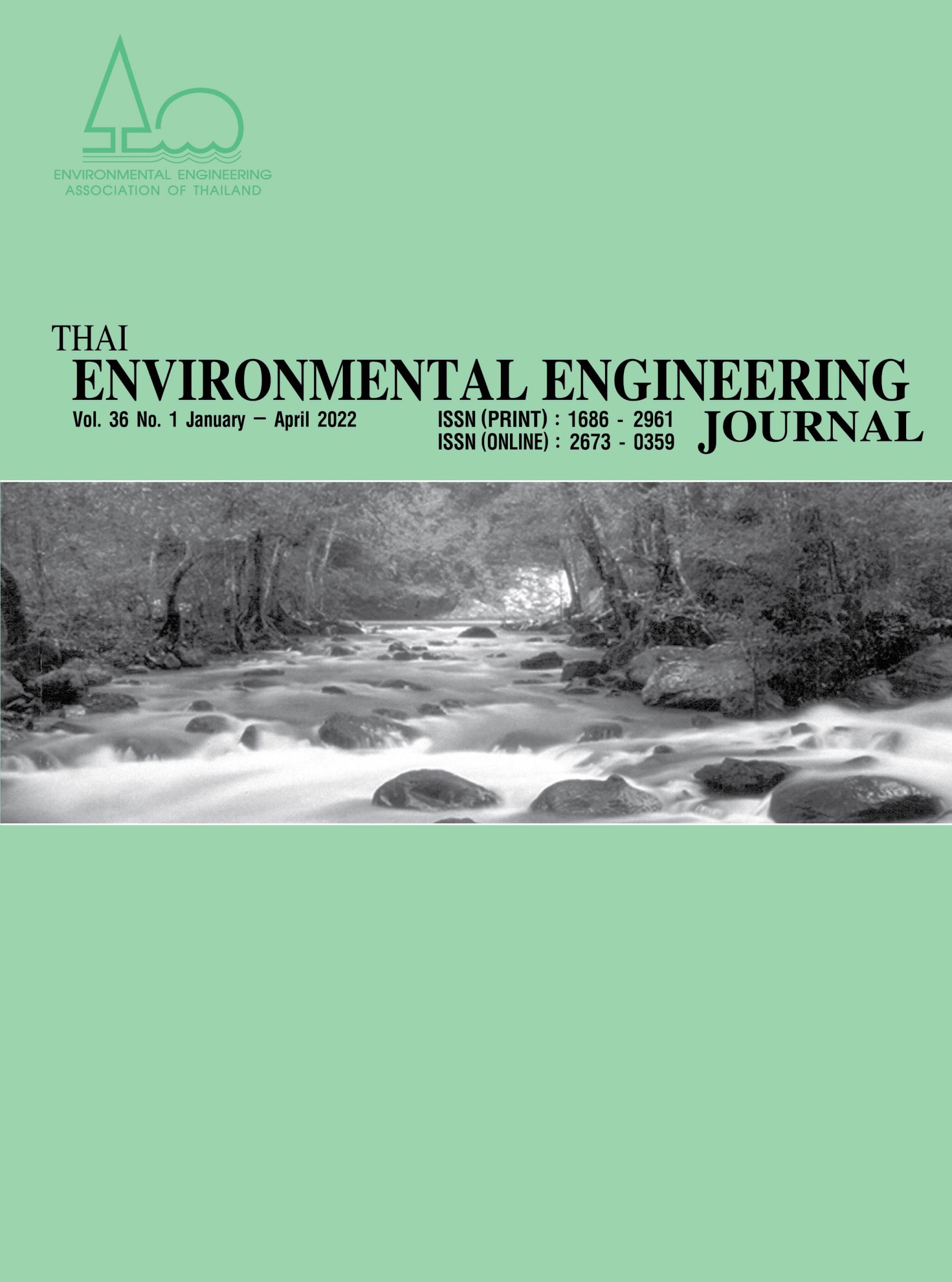Application of Data Envelopment Analysis for Assessment of Eco-Efficiency of Food Shops at Phuket Island, Thailand
Main Article Content
Abstract
Located in the southeast of Thailand, Phuket is an eminent tourist destination not only for its natural splendor but also for its culinary development. In 2015, the island was recognized as a “City of gastronomy” by the United Nations Educational, Scientific and Cultural Organization (UNESCO) proving the undeniable influence of food services on the prosperity of the tourism industry at this island. Together with the aim to increase revenue from the gastronomy, Phuket has also committed to developing responsible and sustainable production and consumption of local food resources. As a contribution to a more balanced development of food services, this study aims to investigate the performance efficiency of food service at Phuket Island in terms of environmental and economic aspects. Data Envelopment Analysis (DEA) had been adopted to study the comparative efficiency performances of 298 food shops at Phuket Island, based on the input and output of the food shops during the operational process. The results being interpreted for different aspects with different comparisons showed the relationship between input (i.e. utility consumption), undesirable output variables (i.e., greenhouse gas (GHG) emissions, and waste disposal), and desirable output (i.e., net profit) in the studied food shops. It was revealed that the electricity consumption accounted for the major share in terms of utility consumption and GHG emission, resulting in the most notable impact on the efficiency score, which was evaluated based on the input and output of the food shops during the operational process. Food shops with lower electricity consumption are clarified as the majority of food shops having a high efficiency score. The surrounding area also played an important role in the efficiency score of the food shops. Food shops in the areas with well-known tourist destinations, such as central Thalang District, southeastern Mueang District, and southwestern Kathu District were more efficient than the food shop in more remote locations such as eastern Thalang District and the northeastern part of Kathu District which are rural areas covered by a variety of mountains and forests with low population.
Article Details
References
Pensiri, A., Nantaporn, K. and Parichut, P. 2016. The study of tourists’ behavior in water usage in hotel business: Case study of Phuket province, Thailand. International Journal of Industrial and System Engineering. 10(10): 3366-3370.
Chavarria, L. C. T. and Phakdee-auksorn, P. 2017. Understanding international tourists' attitudes towards street food in Phuket, Thailand. Tourism Management Perspectives. 21: 66-73.
Phuket Provincial Statistical Report. 2017. Phuket Provincial Statistical Office. http://phuket.nso.go.th/index.php?option=com_content&view=article&id=132&Itemid=625. [Accessed 25 May 2018].
Mak, A. H., Lumbers, M., and Eves, A. 2012. Globalisation and food consumption in tourism. Annals of tourism research. 39(1): 171-196.
Cheng, X. 2017. “City of Gastronomy” of UNESCO Creative Cities Network: From international criteria to local practice, social system research. July 2017. China. 55-67.
Camarero, M., Castillo, J., Picazo-Tadeo, A. J. and Tamarit, C. 2013. Eco-efficiency and Convergence in OECD Countries. Environmental and Resource Economics. 55: 87-106.
Mavi, R. K., Saen, R. F. and Goh, M. 2019. Joint analysis of eco-efficiency and eco-innovation with common weights in two-stage network DEA: A big data approach. Technological Focasting & Social Change. 144: 553-562.
Thanawong, K., Perret, S. R., Basset-Mens, C. 2014. Eco-efficiency of paddy rice production in northeastern Thailand: a comparison of rainfed and irrigated cropping systems. Journal of Cleaner Production. 73: 204-217.
Charnes, A., Cooper, W. W. and Rhodes, E. 1978. Measuring efficiency of decision making units. European Journal of Operational Research. 2: 429-444.
Giménez-García, V. M., Martínez-Parra, J. L. and Buffa, F. P. 2007. Improving resource utilization in multi-unit networked organizations: The case of a Spanish restaurant chain. Tourism Management. 28(1): 262-270.
Qi, Xiao-G. and Guo, B. 2014. Determining Common Weights in Data Envelopment Analysis with Shannon’s Entropy. Entropy. 16: 6394-6414.
Mhlanga, O. 2018. Factors impacting restaurant efficiency: a data envelopment analysis. Tourism Review. 73(1): 82-93.
Gharakhani, D., Maghferati, A. P., and Jalalifar, S. 2012. Evaluation of the efficiency of restaurants using DEA method (the case of Iran). Life Science Journal. 9(4): 530-534.
Hu, J. L., Chiu, C. N., and Chu, H. T. 2019. Managerial efficiency in the food and beverage industry in Taiwan. Journal of Hospitality Financial Management. 27(1): 39-48.
Chen, T. H. 2011. Performance measurement in a small Taiwanese hotel chain. Cornell Hospitality Quarterly. 52 (2): 354-362.
WBCSD (World Business Council for Sustainable Development). 2000. Eco-efficiency: Creating more value with less Impact. WBCSD, Geneva, 32.
Seppälä, J., Melanen, M., Mäenpää, I., Koskela, S., Tenhunen, J. and Hiltunen, M.-R. 2005. How can the eco-efficiency of a region be measured and monitored? Journal of Industrial Ecology. 9: 117-130.
Dyckhoff, H. and Allen, K. 2001. Measuring ecological efficiency with data envelopment analysis (DEA). European Journal of Operational Research. 132: 312-325.
Energy Star. 2009. Greenhouse gas inventory and tracking in portfolio manager. www.energystar.gov/ia/business/evaluate_performance/Emissions_Supporting_Doc.pdf. [Accessed 15 June 2018].
Dai, T., Yang, Y., and Wemhoff, A. P. 2020. The On-Site Energy Demand of Meats Consumed in Restaurants. Resources, Conservation and Recycling. 160(104845): 1-10.
Freeman, E. M. 2011. Restaurant Industry Sustainability: Barriers and Solution to Sustainable Practice Indicators. Arizona State University (Master Thesis).


